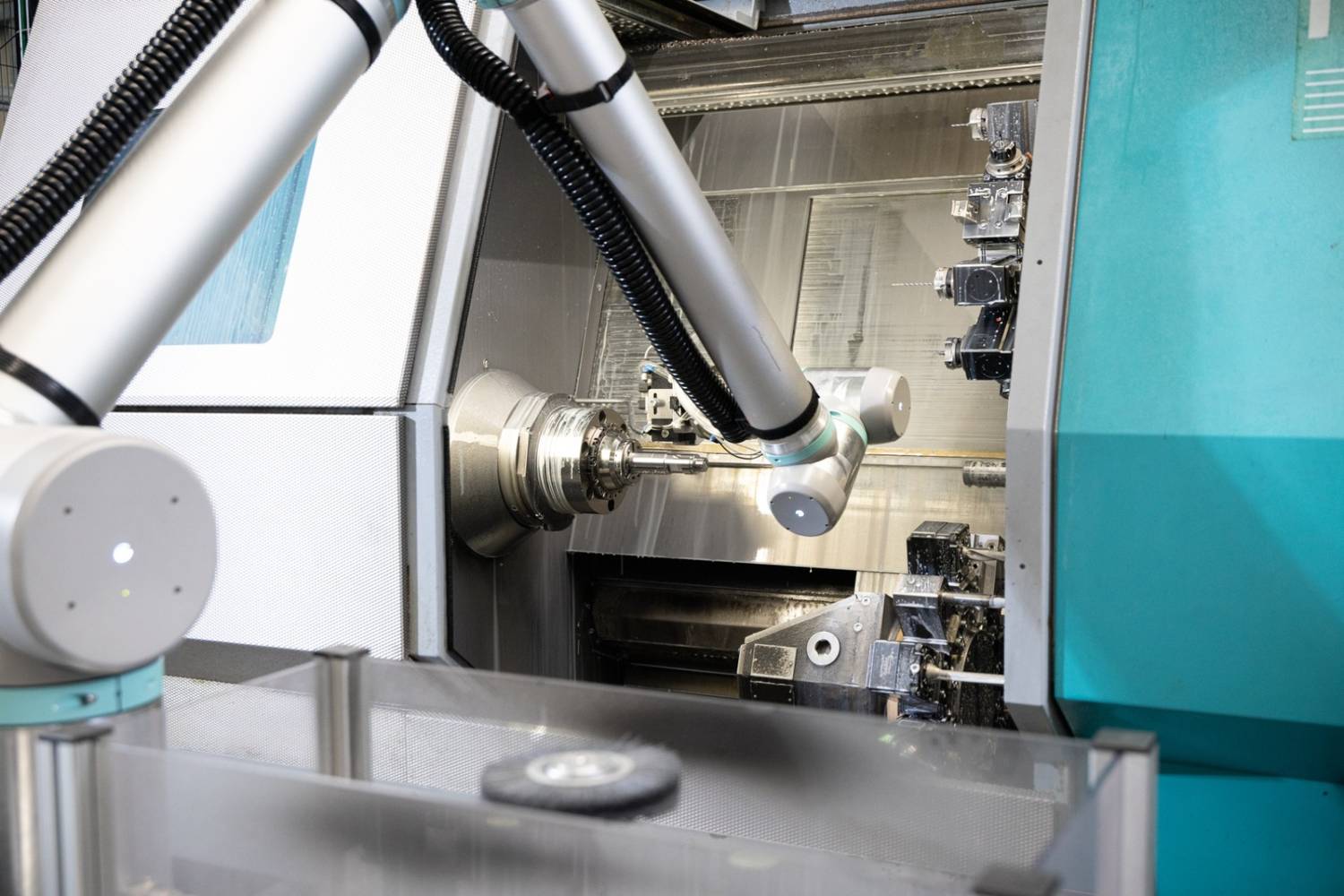Lathe robots are a special type of industrial robot that are used to automate lathes in the manufacturing industry. These often modular robots play a crucial role in optimising production processes, particularly in areas where precision, efficiency and speed are required.
How it works:
Robots are designed and programmed to automate lathes and CNC machines in such a way that they can perform a wide range of tasks in operation. This includes loading and unloading workpieces, setting up tools, carrying out precision machining and depositing finished parts. These robots are able to perform complex movements with high accuracy to achieve the desired processing results.
Advantages:
1. Increasing productivity: Lathe robots enable continuous and efficient processing of workpieces, which leads to an increase in production speed and capacity.
2. Improved precision: The precise movements and positions of the robots minimise tolerances during processing, which results in higher quality of the manufactured parts.
3. Reduce labor costs: By using robots on lathes and CNC machines, companies can reduce their reliance on manual work while increasing productivity, resulting in cost savings.
4. Flexibility: These robots are able to quickly adapt to changing requirements and production orders by being able to handle various workpieces and processing processes.
Application examples:
1. Serial production: Lathe robots are often used in series production to process large quantities of workpieces with high precision and speed.
2. Small batch production: Lathe robots can also be used in small batch production to increase efficiency and reduce lead times without sacrificing quality.
3. Prototype manufacturing: For the production of prototypes and individual parts, robots on lathes offer the flexibility to carry out various processing steps and react quickly to design changes.
Robots used on lathes and CNC machines are therefore an indispensable tool for companies that want to optimize their manufacturing processes and remain competitive. Thanks to their versatile applications and efficiency, they contribute significantly to increasing productivity and quality.

